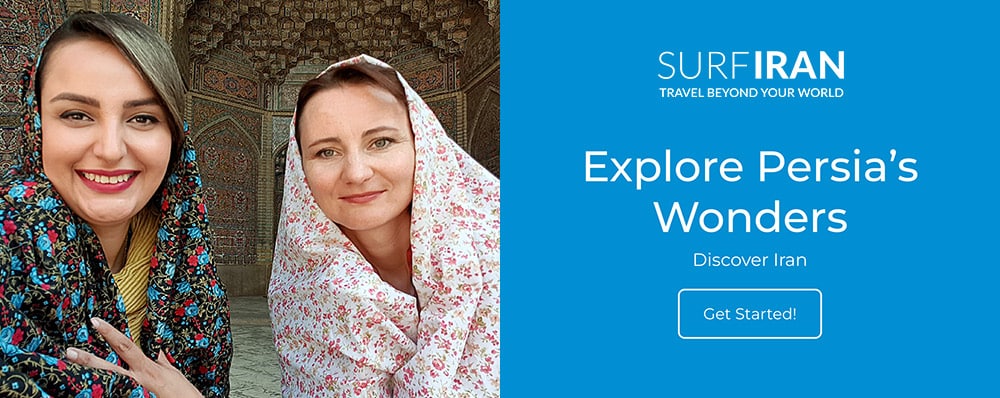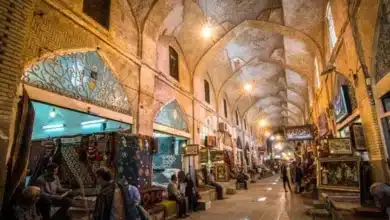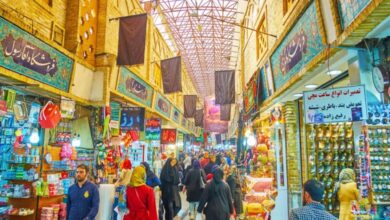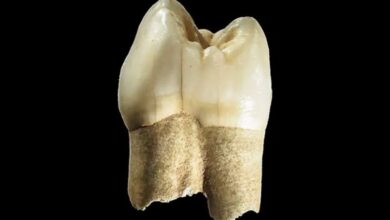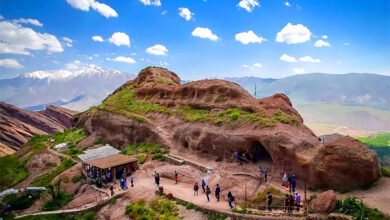Qazvin Grand Bazaar
A Vibrant Tapestry of History, Culture, and Commerce
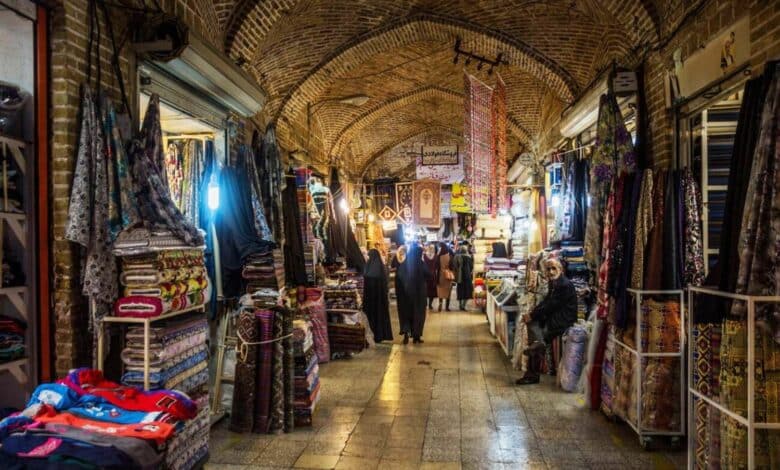
Qazvin traditional bazaar ranks as one of the must-visit places in Qazvin, with a history dating back to the Safavid and Qajar eras.
This bazaar not only boasts a unique architecture comprising various sections but also offers a wide range of goods perfect for souvenirs.
The most significant parts of Qazvin Bazaar include Masjed al-Nabi, Sa’d al-Saltaneh Caravanserai, Vazir Caravanserai, Qeysarieh Caravanserai, Haj Reza Caravanserai, Razavi Caravanserai, open and covered Timches, all of which are definitely worth a visit.
Contents
Where is Qazvin Bazaar?
Location: Qazvin Province, Qazvin City, Imam Khomeini Street
Access to Qazvin Bazaar
Qazvin Bazaar features three main entrances, allowing access from Imam Khomeini Street, Cyrus, or Molavi Street, depending on your route.
Discovering Qazvin Bazaar
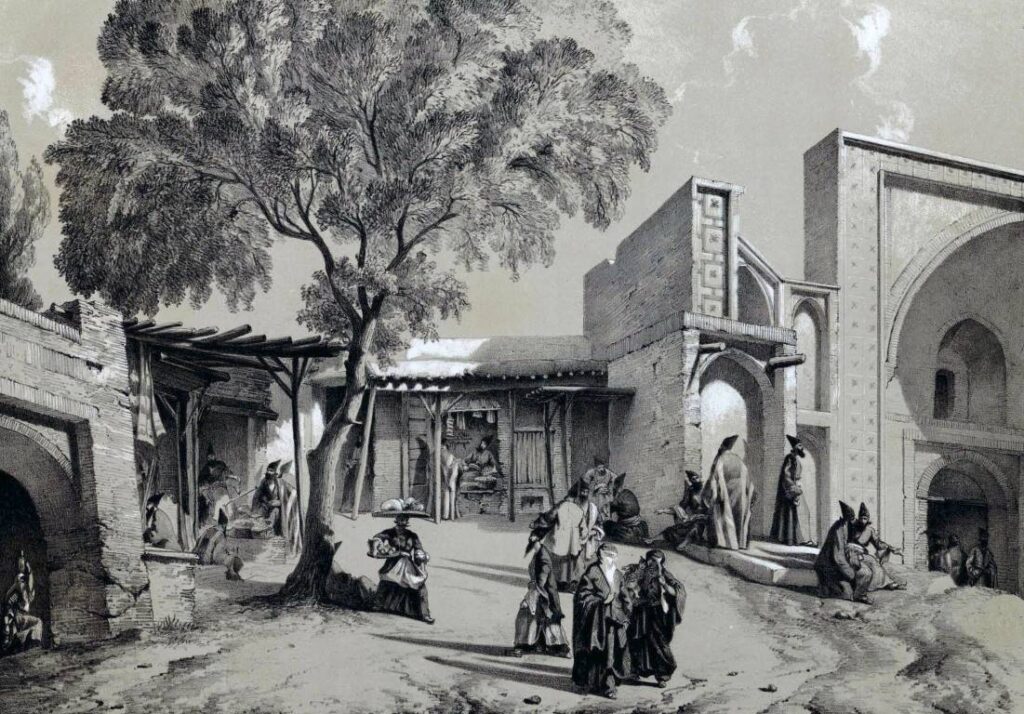
Qazvin Bazaar stands as one of the most beautiful historical markets in Iran, presenting a mesmerizing picture of the past through its stunning architectural art.
Indeed, this bazaar represents the historical, cultural, and economic heritage of the city.
The famous markets within the Qazvin Bazaar complex include sections for locksmiths, carpenters, drapers, glassware sellers, woodturners, saddle makers, leather sellers, rope makers, cotton merchants, blacksmiths, woodcarvers, goldsmiths, druggists, fodder sellers, junk dealers, coppersmiths, tinners, and more.
History of Qazvin Grand Bazaar
The Qazvin Bazaar is a legacy from the Safavid era, which continued to flourish and expand during the Qajar period with the addition of caravanserais, sarais, and Timches. With Qazvin’s selection as the capital during the Safavid era, significant construction activities took place over 50 years. At that time, a large square named Market was constructed in Qazvin, though no trace of it remains today. Intriguingly, Isfahan‘s Naqsh-e Jahan Square was designed based on the blueprint of the Qazvin Market.
Various components of the Qazvin Historical Bazaar were developed around this square.
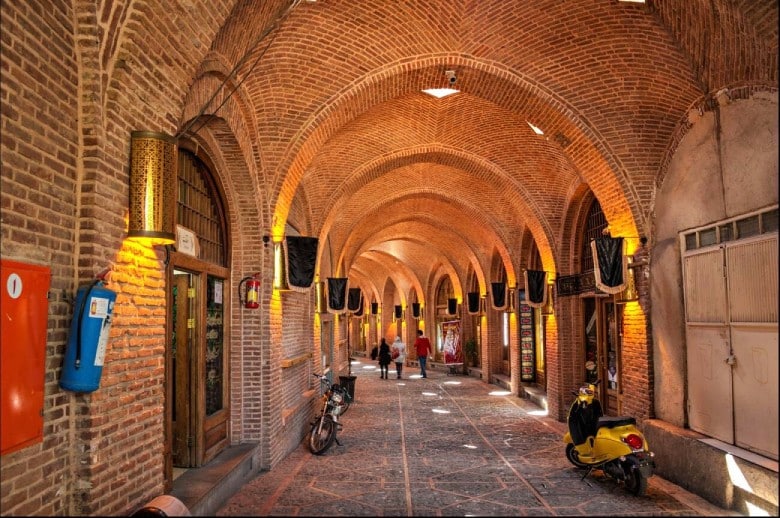
A significant part of the market during that period was the grand Abbasid Caravanserai, which was later demolished to make way for Masjed al-Nabi. This construction diminished the importance of the Jāmeh Mosque, and new passages from Masjed al-Nabi (the new Jāmeh Mosque) to the market were added.
The peak of prosperity for the Qazvin Bazaar can be traced back to the Qajar period up to the onset of World War I.
This era’s fame was due to international trade, which turned the Qazvin Market into an economic hub in the region. Qazvin was strategically located on the road from Tehran to Russia and Europe, gaining significant importance in cross-border trade.
Over the decades, the market has witnessed numerous changes; for instance, the Jāmeh Mosque of Qazvin has become completely separated from the market fabric, and currently, there is no connection between the market and the mosque.
Architecture of Qazvin Historical Bazaar
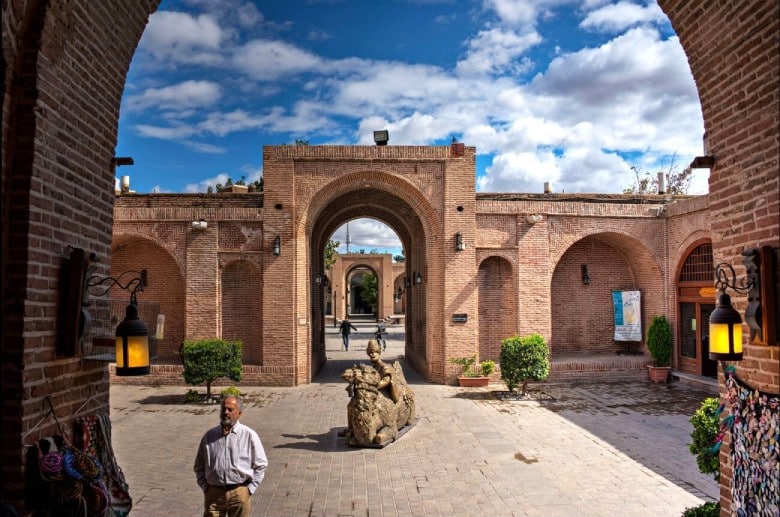
The Qazvin Grand Bazaar is a beautiful and vast complex that has evolved over time, completing various sections to form the developed market we see today. Currently, the market spans approximately 14 hectares, with each section dedicated to a specific trade.
If you have visited the markets of Isfahan and Shiraz, the architecture of Qazvin Grand Bazaar will remind you of those. Most decorations in this market include brickwork and tilework. Some parts also feature very high brick arches that remain intact; however, certain areas of the market have not been spared by the ravages of time and have suffered some architectural damage.
Different Sections of Qazvin Grand Bazaar
The Qazvin Grand Bazaar comprises key sections such as Masjed al-Nabi, Sa’d al-Saltaneh Caravanserai, Vazir Caravanserai, Haj Reza Caravanserai, Razavi Caravanserai, Calligraphers’ Caravanserai, Sarbaz Timcheh, Covered Timcheh, Haj Seyed Kazem Timcheh, Darvish Mehdi Timcheh, Haj Mohammad Taghi Timcheh, Shah Caravanserai, Naqd Ali Caravanserai, Haj Mohammad Baqer Caravanserai, Dalan-e Daraz Caravanserai, Zarabkhaneh Caravanserai, Negar al-Saltaneh Caravanserai, Beheshti Caravanserai, Qeysarieh Bazaar, Sa’diyeh Bathhouse, Razavi Bathhouse, and Qahraman Courtyard.
Below, we introduce some of these.
Caravanserais of Qazvin Bazaar
Explore the historic Caravanserais of Qazvin Bazaar, a testament to the rich legacy of trade and culture along the Silk Road. Each caravanserai stands out with its distinctive architecture and stories, narrating the lives of travelers, merchants, and artisans who flourished in this vibrant trade center.
Qeysarieh Caravanserai
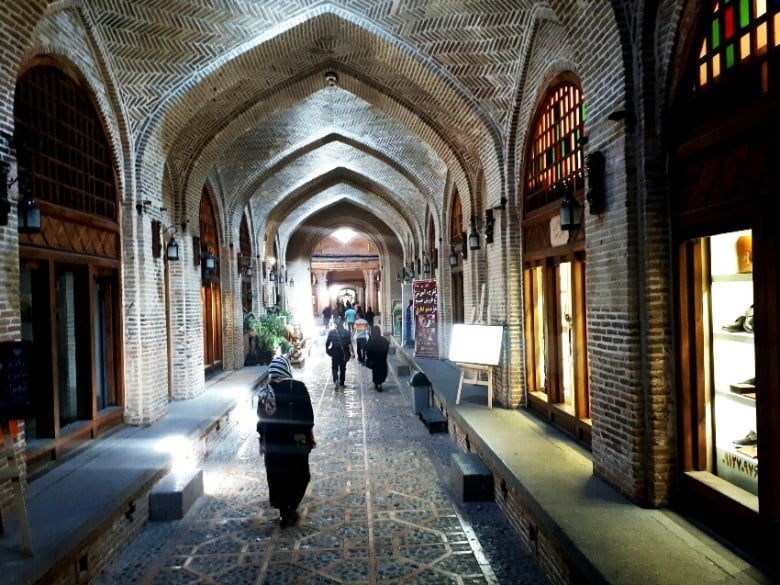
The Qeysarieh Bazaar was a famous trading spot and a special place for craftsmen, notable for its unique architecture, including high arches made of bricks.
It has four entrances leading to different sections of the market: the northern entrance leads to Sarbaz Timcheh; the southern to the Covered Timcheh; the eastern to Vazir Caravanserai; and the western to a small four-way intersection.
Sa’d al-Saltaneh Caravanserai
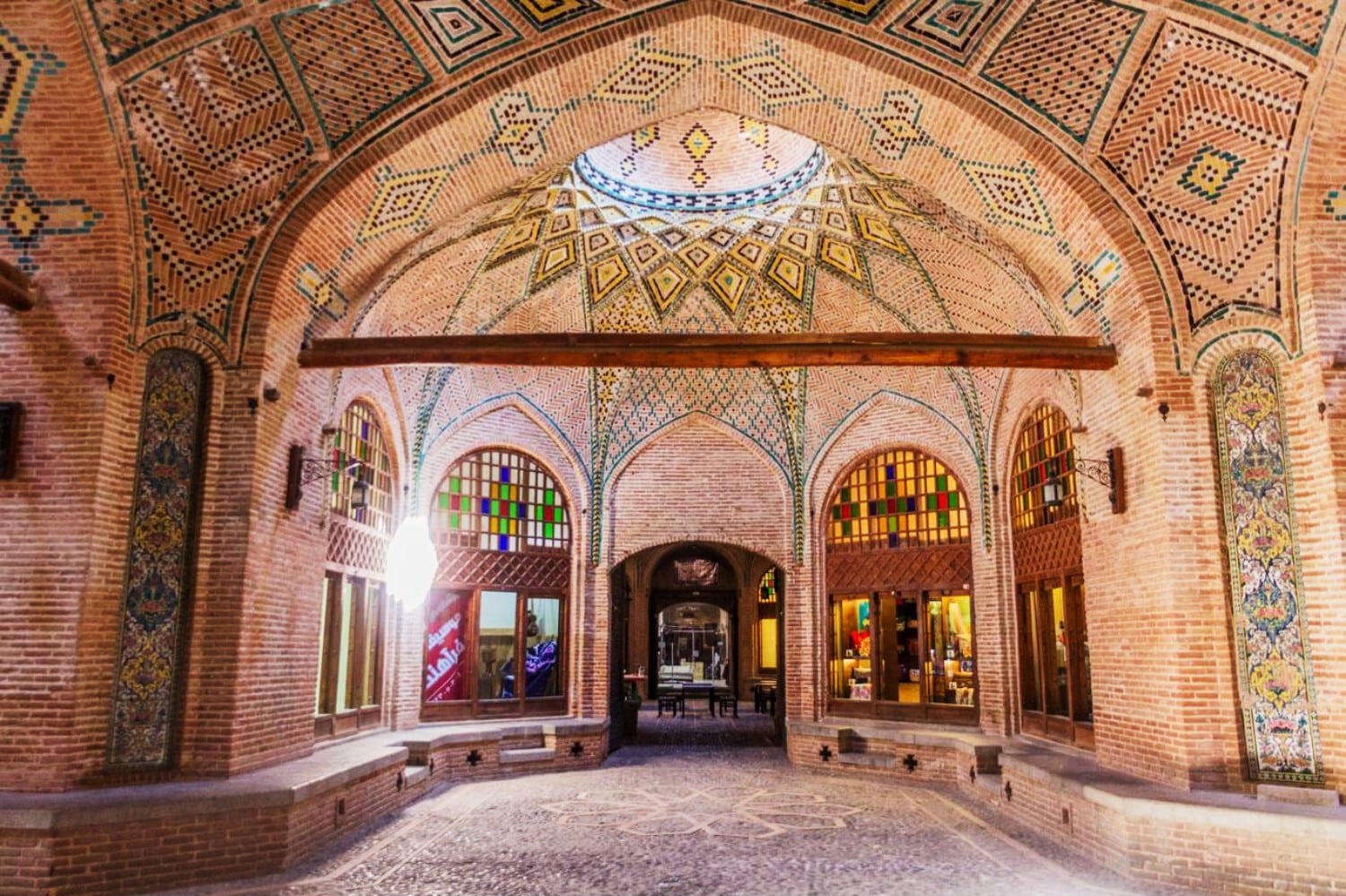
Spanning 26,000 square meters, Sa’d al-Saltaneh Caravanserai was built during the Qajar era by the order of Sa’d al-Saltaneh, the then ruler of Qazvin.
Constructed by two prominent Iranian architects, Mehdi Chegini and Hassan Khanjari, it is considered one of the most complete and largest caravanserais in Iran.
The complex includes various parts such as Chahar Suq, Raste (market rows), caravanserai, market, and other sections, some of which have been demolished or abandoned. In recent years, restoration projects have been underway.
“Chahar Suq” is a Persian term that translates to “four markets” and refers to a traditional architectural feature commonly found in the bazaars of Iran and other parts of the Middle East. It is a crossroads or junction where four market aisles intersect, often marked by a central dome or open space. This architectural design facilitates navigation and trade within the bazaar by creating a focal point that connects different sections of the marketplace.
The complex features multiple entrances, some opening onto surrounding streets and others connecting to different sections of the Qazvin Grand Bazaar.
The most valuable part of the complex is the Chaharsuq, created at the intersection of two market rows, topped with a large tiled dome.
The dome is surrounded by four semi-domes adorned with intricate designs and skylights, enhancing the space’s grandeur. Around the Chaharsuq, 16 chambers are situated one meter above ground level, showcasing intricate wooden doors.
In the southwest of the complex lies the loading yard, previously used for unloading camels’ cargo, hence also known as the Camel Yard. In the southern part of the yard, one can find the warehouse, a covered brick space with 100 beautiful columns. The size of this warehouse reflects the builders’ foresight regarding Qazvin’s trade. This complex was registered as a national monument of Iran on 1978.
Vazir Caravanserai
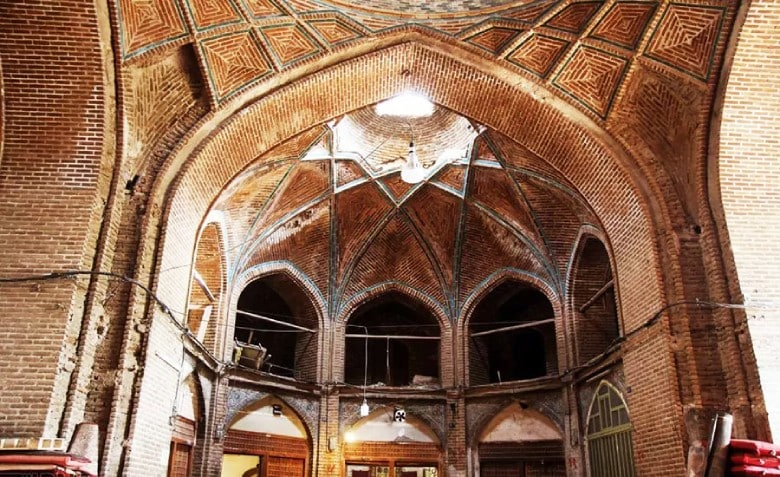
Vazir Caravanserai is situated opposite the eastern entrance of the Qeysarieh Bazaar row.
Its entrance vestibule features chambers with tiled arches and a central dome made of brick, illuminated by a skylight approximately one meter in diameter.
The caravanserai surrounds a large courtyard with chambers on two floors. These chambers sit on a platform one meter above ground level. The design of the caravanserai is four-iwan (porches); however, currently, there is no iwan on the eastern side.
All chambers have barrel vaults, and most on the second floor are equipped with Orosi (traditional wooden lattice windows). The chambers feature artistic tilework with patterns of arabesques, suns, horses, lion hunting, bird hunting, and winged humans.
Haj Reza Caravanserai
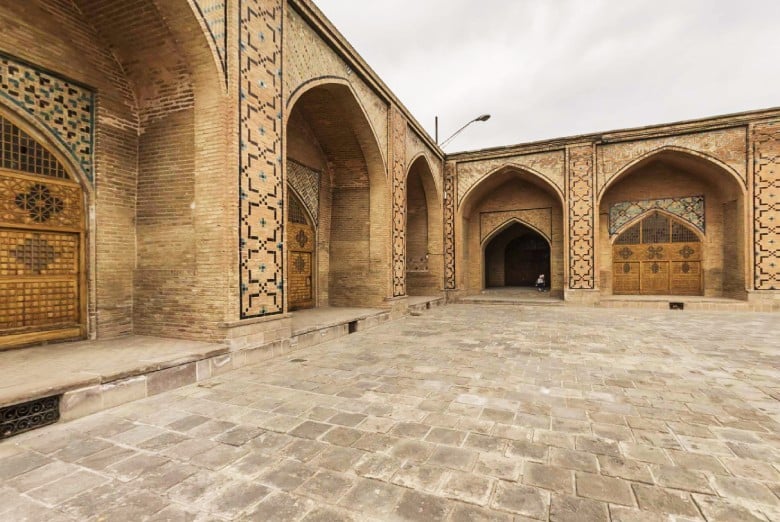
Haj Reza Caravanserai connects to Vazir Bazaar from the north and boasts a large courtyard surrounded by chambers and rooms on two floors.
The entrance to the caravanserai, located on the western side, resembles a covered Timcheh due to its beautiful arches.
The chambers and the porch’s façade feature semi-circular arches with tilework on a brick background. Historically, this building was predominantly used by merchants from Tabriz and the Caucasus.
Razavi Caravanserai
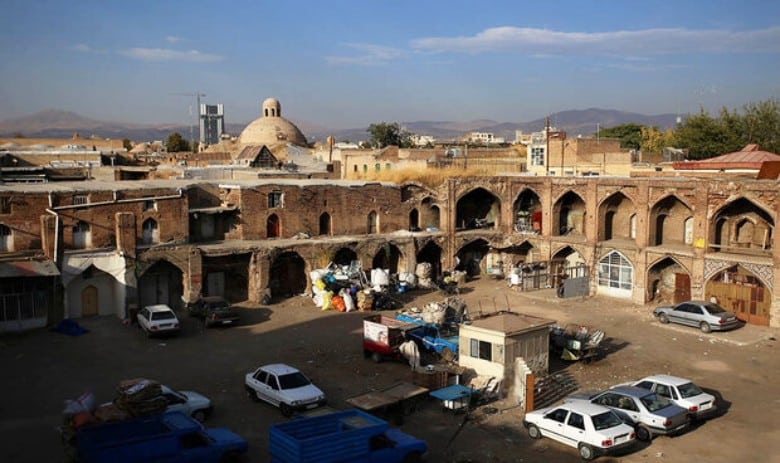
The construction of Razavi Caravanserai dates back to either the reign of Shah Tahmasb of the Safavid dynasty or the era of Fath Ali Shah Qajar, according to various accounts.
It is built with two iwans and includes a collection of chambers on two floors surrounding a rectangular courtyard.
The chamber façades are decorated with brickwork in a wickerwork pattern.
The central vestibule of the western iwan, which opens with a large door to the bazaar of fabric merchants, features a brick dome adorned with beautiful tilework.
In the past, this caravanserai functioned as a lodging for caravans, using its camel yard for quadrupeds.
Timches of Qazvin Grand Bazaar
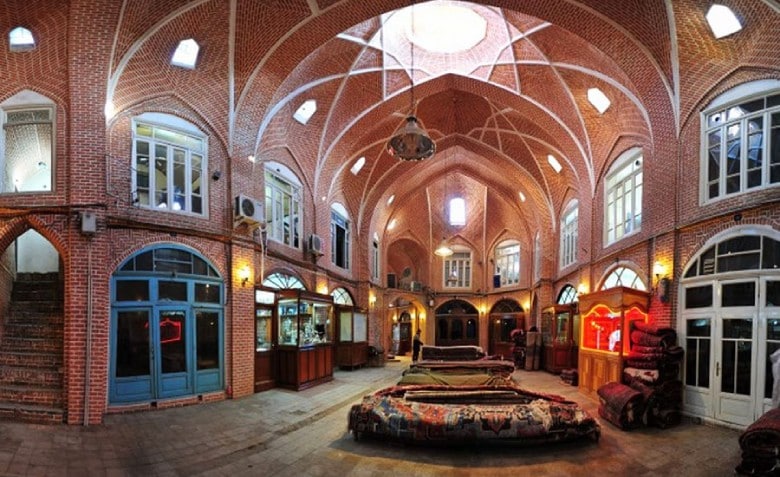
The two-story Sarbaz Timcheh, located north of the Qeysarieh, is adorned with an arched entrance featuring authentic Iranian architecture. The spandrels of the chambers are decorated with yellow and pink tiles depicting hunting scenes, floral motifs, and birds. The wooden doors of these chambers also have beautifully crafted wooden lattices.
“Timches” are traditional covered market spaces or halls within larger bazaars in Iran, serving as commercial complexes for specific types of goods or services. Characterized by their vaulted roofs and often central courtyards, Timches provide merchants with a communal space for selling their products, ranging from carpets and textiles to spices and jewelry.
Covered Timcheh
Positioned south of the Qeysarieh, this Timcheh is covered with a roof. It has two floors, and its chambers serve as the workplace for Qazvin’s merchants and traders.
Haj Seyed Kazem Timcheh
Situated in the middle of the Qazvin Bazaar, opposite the row of saddle makers, is a small covered Timcheh where numerous well-known merchants, including “Haj Seyed Kazem the leather merchant,” conducted their businesses. Today, this Timcheh is a center for leather goods.
Razavi Timcheh
Constructed with the investment of “Haj Seyed Abolghasem Razavi Esfahani,” he moved his trading house from the Sa’adat Caravanserai of Qazvin Bazaar to this location and exclusively used this Timcheh.
Now, Razavi Timcheh is in the hands of his descendants and operates as a lumberyard.
Darvish Mehdi Timcheh
This Timcheh is located between the large Chaharsooq, the Jalodar Bathhouse, and opposite the southern entrance of the Zarabkhaneh Caravanserai. In the past, falconers were active in this Timcheh.
Haj Mohammad Taghi Timcheh
Founded by “Haj Mohammad Taghi Yazdi,” this Timcheh is situated in the blacksmiths’ market and currently functions as a place selling ice.
Masjed al-Nabi
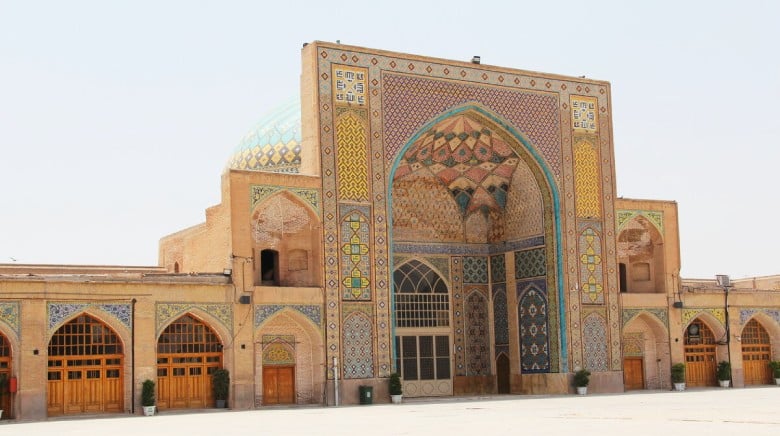
Masjed al-Nabi, previously known as Shah Mosque, was constructed during the Qajar era by the order of Fath Ali Shah, according to an inscription within it. However, many believe that the original structure dates back to the Safavid era and attribute its architecture to Master Mirza of Shiraz. Every Friday, the mosque hosts Friday prayers. Masjed al-Nabi of Qazvin was listed as a national monument of Iran on January 5, 1932.
What to Buy from Qazvin Market?
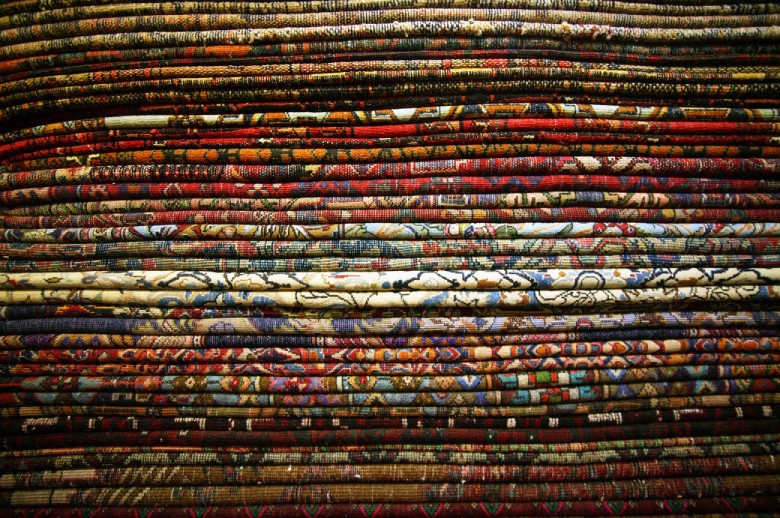
In Qazvin Market, a wide variety of handicrafts such as Kilim, Giveh (traditional footwear), carpets, and Jajim (a type of woven rug), along with calligraphy and reverse glass painting, are available for purchase.
In other sections of the market, you can buy local delicacies like rice bread, Qazvin Baklava, sugar bread, wheel bread, and other Qazvini sweets. The fruit and vegetable section also has its unique appeal with its colorful and fresh produce.
Tips for Visiting Qazvin Bazaar
When visiting Qazvin Bazaar, you can spend hours exploring its different sections and taking photos. The market’s visiting hours are from 8 AM to 9 PM. There is limited parking available around the market. Nearby attractions include Chehel Sotoun of Qazvin, the Qazvin Museum, Sardar Mofakham Mansion, and Aminiha Hosseiniyeh.
BOOK ONLINE
Iran Hotels Online
Final Word
Exploring Qazvin Bazaar offers a unique glimpse into Iran’s rich cultural heritage, showcasing exquisite handicrafts, traditional foods, and historic architecture. Whether you’re a history enthusiast, a food lover, or a souvenir collector, this market promises an unforgettable journey through the heart of Qazvin.
Read More
